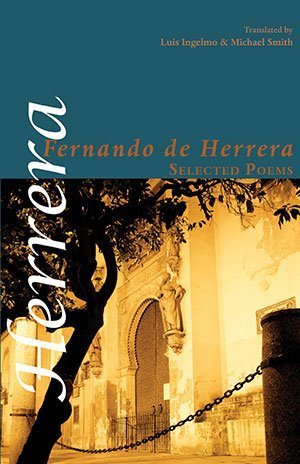Shearsman Store
Herrera, Fernando de
Little is definitely known about the life of Fernando de Herrera (1534–1597) despite the fact that he was well known in his native Seville — though even his place of birth is disputed. There are references to a relatively humble birth. Herrera himself and his friend Pacheco affirm that Seville was his place of birth, but others claim that he was born of "nobles padres con moderada hacienda" (of noble parents of moderate means), basing on this his lifelong disdain for the vulgus and his espousal of the Horatian odi et amo… Whatever about any of this, which is the area of scholars, Herrera opted to take minor religious orders rather than full religious orders and entered into the service of Don Álvaro de Portugal, Count of Gelves, with the intention of devoting himself to poetry and his intellectual interests, which the Count and his wife Leonor cultivated. Herrera fell platonically in love with Leonor, who became his muse and to whom so many of his poems are dedicated. She became his Petrarch's Laura: anything beyond this is pure speculation and most unlikely.
Even Herrera's erudition has been put in doubt by some scholars. That he knew Italian and Latin is undoubted, but some doubt has been cast on his knowledge of Greek, with some scholars believing that he used Latin translations of the Greek. The weight of evidence, however, suggests that he knew Greek. What is not in doubt is his profound erudition, which is manifest in his Obras de Garcilaso de la Vega con anotaciones de Fernando de Herrera.
And what is not in doubt either is the importance of Seville in Spain in the first half of the 16th century. It was the primary port receiving the gold and silver from Spanish galleons arriving from the Americas, on which Spain built its European empire, making Seville the richest city in the Iberian Peninsula. It was the cradle of the Spanish Renaissance, in architecture, scholarship, philosophy, literature and other areas of the arts. It was certainly the right place in which Herrera could find a place for himself with his irrepressible enthusiasm for literature and study. Furthermore, he was fortunate in finding the patronage of the Count of Gelves, and especially of his wife Leonor, who established that Spanish institution known as tertulias , gatherings of scholars and writers who met to discuss the humanistic culture of the Renaissance. It was that patronage that enabled him to pursue his literary and scholarly career which would not have been possible for him on the meagre resources of a cleric in minor orders.
More relevantly, so far as Herrera's poetry is concerned, is the impact on Spanish poetry of Garcilaso de la Vega and his friend Juan Boscán, which is not, however, to minimise the influence of Petrarch. Their poetry was collected by Boscán's widow and published in 1543 with the title Las obras de Boscán y algunas de Garcilaso de la Vega repartidas en cuatro libros. The writing of the poems was inspired by Andrea Navagero, whom the Venetian Signoria had sent to the Spanish Imperial Court of Charles V. Navagero, among many other Italians, had experimented with Italian prosody with the object of expressing in his native language the Latin rhythms of Horace and Virgil, and he had achieved much success. In Spain, Navagero met and befriended a young Spaniard, a man of the Renaissance, one Juan Boscán, whom he strenuously persuaded to try what had not before been attempted in Spanish—in fact, the Marquis of Santillana had attempted sonnets, although these were not then in print—the writing in Spanish of "sonnets and other forms" employed by good Italian authors. Boscán's example was followed by that of his friend Garcilaso, and out of their joint efforts eventually came their posthumously published book; and out of that book came Spanish Renaissance poetry and its earliest and probably greatest and most influential practitioner, Fernando de Herrera. Garcilaso's models were Virgil's eclogues and Horace's odes. More than Boscán, he stayed close to these classical models while learning, nonetheless, from their Italian imitators, Petrarch and Tasso. The chief characteristics of his poetry are restraint, elegance and respect for form. These are the qualities that Garcilaso found in Petrarch and they are the qualities that Herrera learned from Garcilaso without forfeiting the qualities of his native Spanish. In this he was no different from Ariosto, Michelangelo, Ronsard, Góngora, Camões, Sydney and Donne. Robert M. Durling remarked in his Petrarch's Lyric Poems (Harvard, 1976), "Petrarch's example aroused in poets all over Europe the hope of achieving classic representation in the mother tongue."



